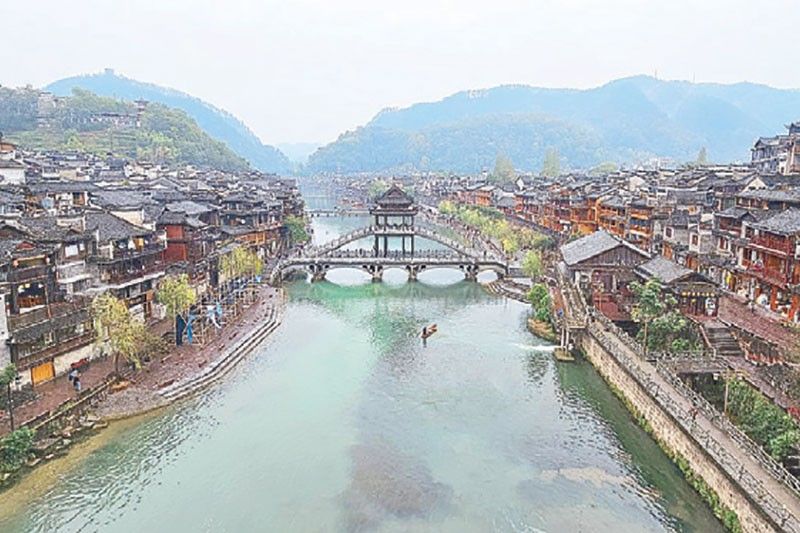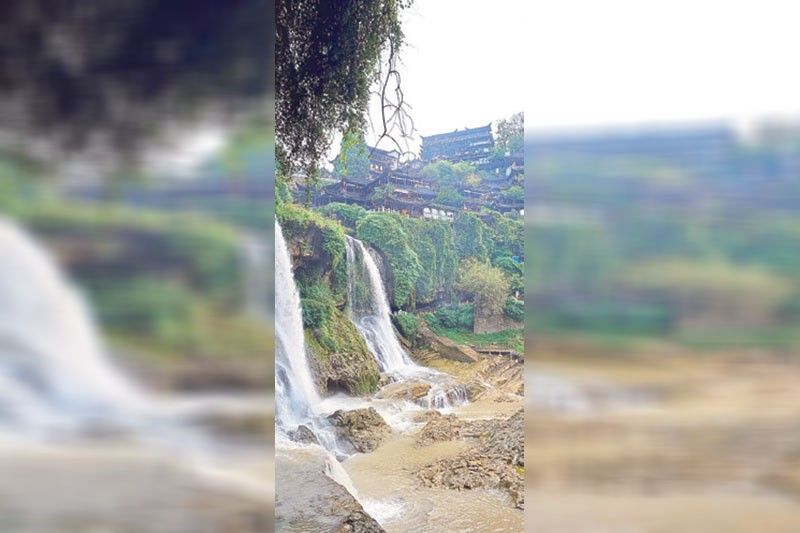Exploring Southern China

I must admit, I had never heard of Zhangjiajie before… then I was told of the “Avatar Forest,” which I had heard of. That is in that city in the northwest of Hunan Province in China where that famous forest is located and is home to the famed Wulingyuan scenic area (a 26,000-hectare area that is a UNESCO World Heritage Site) and other tourist attractions. Hunan was the early home of communist leader Mao Zedong.
We had to fly to Guangzhou via Cebu Pacific before getting to Zhangjiajie. Guangzhou is the capital and largest city of Guangdong Province in southern China. This was a major terminus of the Silk Road. Guangzhou is one of China’s three largest cities. It has several nicknames but the most popular would be “City of Five Rams” or “City of Flowers” and it’s known for Cantonese cuisine. The skyline is impressive as their buildings are so tall, they almost reach the sky! We spent just a day here before heading to our main destination. We ate, shopped, and checked out major tourist spots like the 604-meter-high Canton tower and the statue of five rams.
We flew to Hunan province and checked out two beautiful ancient towns before going to Zhangjiajie. The ancient town of Furong (meaning “hibiscus”) was originally known as Wangcun but was renamed following the success of the film Hibiscus Town, which made this town even more famous! Furong is a 2000-year-old town in the Xiangxi geopark, designated as a UNESCO Global Geopark in 2020. It is located between Zhangjiajie and the ancient city of Fenghuang and is also known as the “Town Hanging over Waterfall.” The scenic town is situated on cliffs above a waterfall that falls into the You River. The Tujia people were the original inhabitants of Wancun and today Furong consists of a mix of Tujia and Han Chinese.
The second ancient town we visited is Fenghuang (meaning “phoenix”), located in the southwest of Hunan Province that served as the strategic gateway connecting Hunan and Guizhou provinces. Fenghuang is one of the most famous old towns in China. This unbelievably beautiful old town named after the mythical and immortal bird was built in 1704 and is known for its charming scenery of multiple ancient homes, towers, bridges, streets, and other buildings, as well as the rich culture of Miao, Tujia and 26 other minority ethnic groups. The totally Instagrammable ancient town of Fenghuang is in the UNESCO World Heritage Tentative List in the Cultural category.

First stop in Zhangjiajie is the Morong Miao Village. The village, though very touristy, has rich Miao folk customs. It is known as the “Little Thousand Households” in Xiangxi. Visitors are encouraged to sing or drink local alcoholic concoctions before entering this village that still keeps their original customs in this modern era.
There are 33 ethnic minority groups in Zhangjiajie. Among these groups, the Tujia ancient ethnic minority has the most in population with a total number of 1.02 million. The Tujia ancestors have been living in the western part of Hunan for 2,000 years. They have their own language system, religious beliefs, and unique cultures of food, costumes, art, and architecture. Zhangjiajie Tujia Folk Custom Park or Zhangjiajie Tusi Imperial City is the best place to understand the daily life of the Tujia people and the Tujia historical culture. This is where the Nine Storied Hereditary Hall or what some call the Tusi Castle is located.

Tusi is a general term used to call the head of the ethnic minority group. Among the ethnic tribes, the king of Tusi has supreme power and authority. Tusi Castle was originally built by Tusi King Qin Chunyi in 1730 during the Qing Dynasty. The entire Tusi Castle is 120 acres and houses many cultural relics here, earning its nickname “South China Forbidden City.”
The Nine Storied Hereditary Hall has 12 floors inside and is 48 meters tall. The entire building is connected by innumerous wooden bolts without using iron nails, and thus it is regarded as a miracle in the history of Tujia architecture. The Hereditary Hall was written in the Guinness Records as the largest, tallest and the most perfect wooden structure stilted building in September 2002.
(To be concluded next week)
* * *
For those interested in the Zhangjiajie/Guangzhou tour, you may inquire through Travel Warehouse, Inc. at (02) 86872490 to 92 or email [email protected] . Check out https://twi.com.ph/. Special thanks to UOS Travel. Cebu Pacific flies to Guangzhou three times weekly and also Shanghai, Beijing, and Xiamen, China.
Follow me on Instagram @pepperteehankee.
- Latest
























